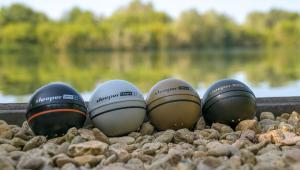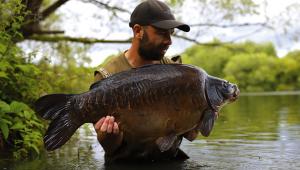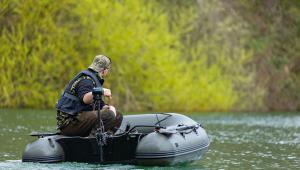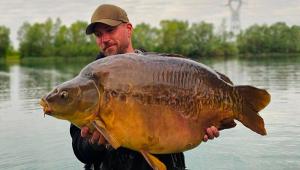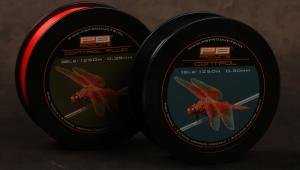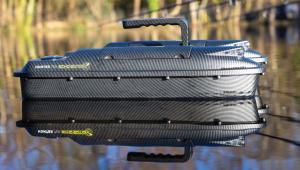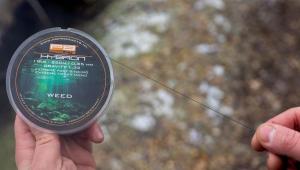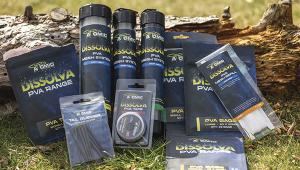Beat The Silt
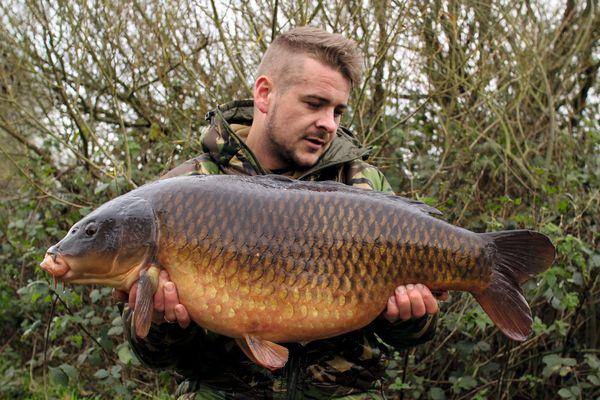
I am not going to say that you won’t get a bite in the silt all year round but at this time of year, more so than any other, the silt is a great place to put your rigs. I feel that the main reason for this is the level of natural food larder that is in the silt. The weed beds are dying back, and the natural food is exposed.
This often pushes it all to the silt, to seek that bit of cover from predators. Carp know this and this is why they will use the silt to turn to find their regular food. It doesn’t matter how thick that silt is, the carp burrow into it to seek what they want.
This is a contrast to what I look for in the summer. I prefer the slightly shallower, harder spots, which again hold that natural food larder. I have found that if you can fish spots that are fed on naturally, they will produce far more bites than a man-made one. The fish will already be heading for that spot and with the supplement of our food, they will be more likely to target those areas.
While the silt can be a great place to fish at this time of year, it does offer some challenges when it comes to presentation. A lot of people struggle with the idea of their rigs and baits disappearing. While this is hard to combat completely, and arguably unnecessary, there are ways of helping.
When I say unnecessary, I mean that the carp will dig around and root out your hook bait. When you check the rig in the silty margin it may all disappear, but the carp can root out a single bloodworm a foot into the silt, so there is a good chance that they will find a bait that has a lot more smell.
Still, like most people, I to want to know that my hook bait is available, and the carp can easily pick it up without anything obstructing it. I have dropped rigs from the boat on to firmer silt and no matter what you do, everything bar the hook bait will disappear, which isn’t a bad thing.
Scott favours a pop-up rig when fishing on softer bottoms.
A foam nugget will help allow the rig to sink slowly on top of the detritus.
What it does mean though, is that the lead will plug into the silt when you are casting out, so taking that in to consideration will help with the lead arrangement and rig. The first thing I would say is to use the lightest lead that you can get away with for the distance that you are fishing. The heavier the lead, the more likely it is to plug deeper into the silt.
Another important factor is the lead arrangement, and for this sort of fishing I tend to use a helicopter rig. What this does is allow me to set the bead a few inches up or even more, depending on how soft I think the bottom is. This means the lead will plug into the silt, but the rig will be up off the bottom when the lead makes the impact, before gently nestling down on top of that lake bed.
Using a balanced bait is key for this though, to allow that bait to sit up and sink slowly down, not going down hard in to the lake bed and disappearing. I like to use a pop-up, tied on my favoured hinge rig for this. Again, it makes sure the bait is sat up off the lake bed and available for the carp to see. To make extra sure that this happens, I squeeze on a couple of foam nuggets to ensure it is popped up and out the way when the lead impacts the bottom. When the nuggets then melt and come off, the rig will sink slowly down.
A helicopter rig will help allow the rig to nestle on top of the thin layer of silt.
A hook link that matches the colour, kicks the bait away and has the suppleness to follow contours is perfect.
For a confidence thing, I do like to use a bright one as a hook bait. White is especially good; with the lake bed being so dull and dark, it really does stand out. By having a glugged pop-up, not only does it offer more smell and attraction, I also feel like it slows down the silt tainting the flavour too, as water is absorbed into the bait.
If I have fished the night and reel the hook bait in, check it and it smells horrible, I know that I might need to lift that top bead up slightly. If it smells good still, it tells me that the bait has been sitting proud of the bottom overnight and everything is sat right.
I mentioned that the carp will dig into the silt looking for food and I say this with confidence as I have seen it first-hand. I have drifted over two fish in the boat and they were up to the back of their gills, burrowing away. The reason why I don’t fish something like a bottom bait is down to the amount of detritus on the lake bed at this time of year.
The leaf fall is at its height and all that litter is going in the lake or on the paths, to then be blown in by the wind into the lake. This then sinks down and begins to rot away. I don’t want my hook getting caught on this, which is why I make sure that it is up and out the way with a pop-up rig.
A textured lead will pick up odours off the spot.
I use the Tungskin as a boom for the hinge and I do this for a number of reasons. The first thing is that it matches the silt brilliantly, making it invisible. It has an inherent stiffness to allow it to kick away from the lead but enough suppleness to ensure it is not kicked out at a funny angle, which is something that really stiff materials can do. If there is a twig on the bottom, it will droop over it as opposed to kick up off it.
My baiting is also tailored to fishing in that silt too. I mentioned that the lead disappeared in a layer of silt when I lowered the rig in off the side of the boat, so there is a good chance that heavy items will also disappear. I like to use boilies in my fishing and by putting out whole baits, they too fall down and become engulfed in a layer of silt and you can’t see them. This is why I break the baits up into crumb and halves.
The halved baits will look like whole boilies on the bottom, but when they go down, they gently flutter and will nestle nicely on top. They are lighter than a whole bait and when you put a handful off the side of the boat, you can see them all.
Broken baits will fall slower than whole ones.
The same goes for small pellets and hemp too, they will gently nestle on top. Some of it disappears, but the majority is visible to the carp. I know that they will find it anyway, even if they can see it, but fish that feed on sight are more likely to drop down as opposed to the carp that use their smell to identify food. It is all theory of course, but as a confidence thing I like to think that my bait is visible to any passing carp.
I like to add oils and other liquids to the mix too. Especially on silty ponds, the carp’s sense of smell I believe is greater than one that lives in a gravel pit. They are in a naturally more smelly, stinky and rotten environment and they need to be able to detect food in this. By adding things like hemp oil to the mix, it is sending food signals right up through the water column and even travels up and down with the undertow of the lake.
Cloudy Manilla will leave a huge white cloud over the spot.
The Cloudy Manilla for example, is something that can add a light cloud on the bottom, which is not only going to pump off loads of attraction for you but also become very visible, again on that contrasting dark bottom.
I would always try and let the carp tell me where I need to put the rig. This can be from them actively showing, or for a lot of cases in the silt they will bubble up a lot. A fish has only got to flank on the bottom and a huge plume of fizz will come up. Generally, if a fish is feeding in the softer bottom you will see the bubbles coming up.
Binoculars allow you to see the subtle signs of fizzing.
When it comes to finding a spot, I try and fish anything that is different. So, if there is a lot of gravel around I will look to fish in the silt off the side of it. If it is a silty lake, then I am looking for the slightly firmer areas that give a nice smooth pull on the lead. I like to use a big lead for this, so I can tell when it plugs and when it doesn’t.
A big lead also gives you a bigger reaction on the tip, to know if the bottom is firm or soft. I also like it to be textured, so that I can cast it to the spot I want to fish, reel it in and give it a smell. If it smells like silt then great, but sometimes it can smell rotten and I don’t want to be fishing in that. I have actively seen fish avoid these areas and it is something I would try hard to keep away from.
A cracking silt feeding mirror, caught over firmer silt.
- Log in or register to post comments
